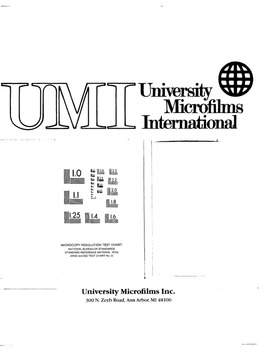| dc.contributor.author | Grumbles, Owen Kent, | en_US |
| dc.date.accessioned | 2013-08-16T12:29:25Z | |
| dc.date.available | 2013-08-16T12:29:25Z | |
| dc.date.issued | 1985 | en_US |
| dc.identifier.uri | https://hdl.handle.net/11244/5379 | |
| dc.description.abstract | The fact that the students' ACT scores failed to discriminate between under- and overachievers would be considered the foremost implication resulting from the study. In addition, the study renounces the traditional stereotypical view of under- and overachievers held by many in academe and places in its stead more refined descriptors. | en_US |
| dc.description.abstract | This study compared academic, demographic, and personal background characteristics of freshmen identified as under- and overachievers according to the discrepancy between their actual freshman-year GPA and their GPA predicted by multiple regression. The population consisted of all new, full-time freshmen (9262) enrolled at the University of Oklahoma from 1981 through 1984; 6975 subjects were derived from the population based on whether or not they had completed the New Student Survey, an instrument designed to solicit a wide variety of information about University of Oklahoma students. Forty-six percent of the subjects were found to be underachievers and 28% were found to be overachievers. | en_US |
| dc.description.abstract | One-way analysis of variance revealed significant differences among under- and overachievers on thirty-seven of sixty-nine variables. Highlights of the findings include the following: both groups had similar minority student representations, came from families with similar economic backgrounds, had similar degree aspirations, had similar expectations to pledge a fraternity or sorority, and shared similar political attitudes. Underachievers had higher high school GPAs, were older, were more likely to be male, came from smaller cities, had parents with less education, were more sure of their academic major and vocational plans, exhibited more liberal attitudes toward social issues, were more likely to drink alcohol, and were more likely to attend OU because of its farness from home than were overachievers. | en_US |
| dc.description.abstract | Conversely, overachievers had lower high school GPAs, earned more hours their freshman year, were younger, were more likely to be female and an Oklahoma resident, were more likely to live on campus, and were less sure of their academc and vocational goals; they placed more importance on developing a sense of personal identity, social interaction skills, tolerance toward others, an awareness of other cultures, and communication skills; they had more conservative attitudes toward social issues and were more likely to choose to attend OU because of their parents' wishes, the advice of friends, financial aid benefits, and because of OU's proximity to their homes. | en_US |
| dc.format.extent | vii, 134 leaves : | en_US |
| dc.publisher | The University of Oklahoma. | en_US |
| dc.subject | Education, Higher. | en_US |
| dc.subject | Academic achievement. | en_US |
| dc.title | Characteristics which distinguish between underachieving and overachieving freshmen at a comprehensive state university / | en_US |
| dc.type | Thesis | en_US |
| dc.thesis.degree | Ph.D. | en_US |
| dc.note | Source: Dissertation Abstracts International, Volume: 46-12, Section: A, page: 3617. | en_US |
| ou.identifier | (UMI)AAI8602716 | en_US |
| ou.group | Jeannine Rainbolt College of Education | |
